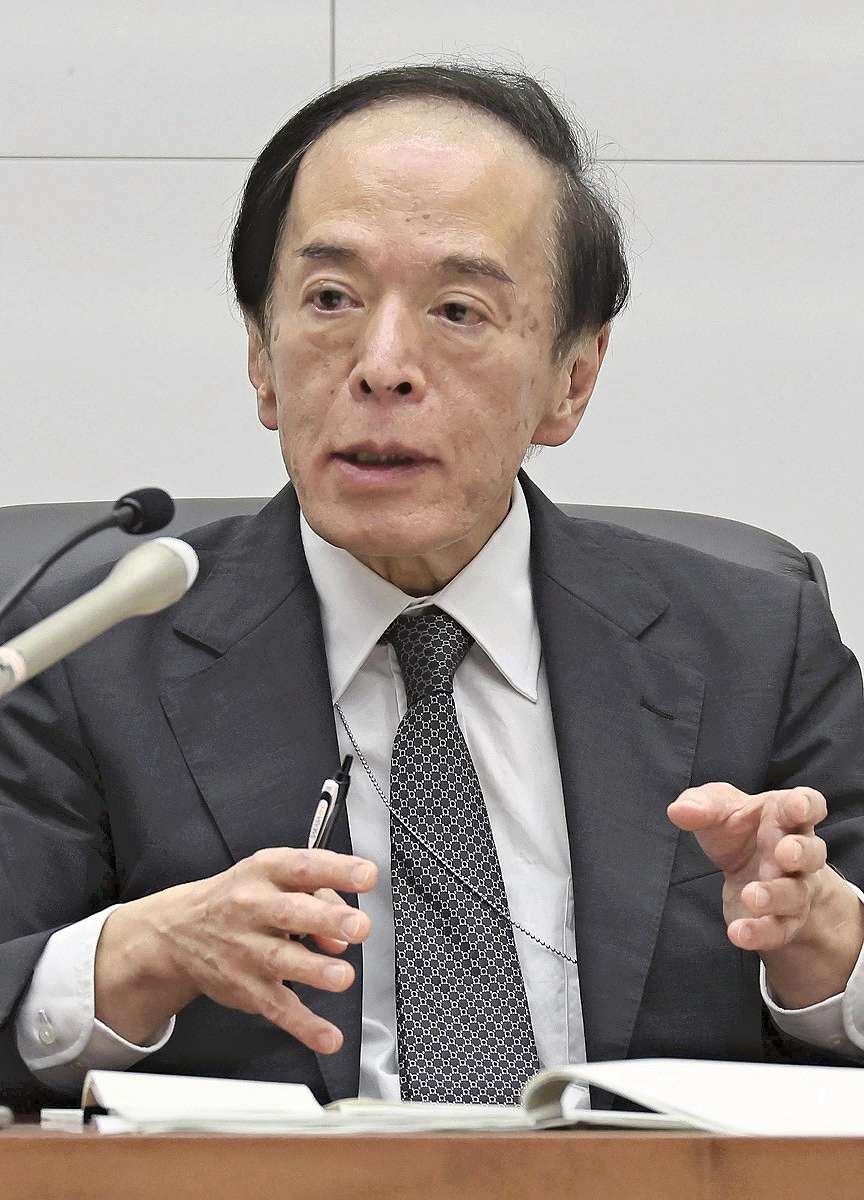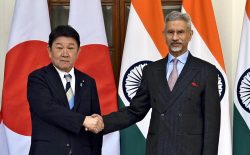Bank of Japan Intends to Proceed with Policy Normalization; Currently Holds 50% of Outstanding Bonds

The Bank of Japan’s Gov. Kazuo Ueda speaks during a press conference at the Bank of Japan Head Office on Friday.
16:03 JST, June 15, 2024
The Bank of Japan intends to proceed cautiously with the normalization of policy away from the large-scale monetary easing that ended in March, observers said.
This comes after Friday’s vote by BOJ policymakers to reduce its government bond purchases, with specific details to be decided at the next monetary policy meeting on July 30-31. BOJ Gov. Kazuo Ueda described this as an “exceptional measure” formulated with input from market participants.
Ensuring flexibility
In a press conference following the policy meeting that ended Friday, Ueda stated, “It is appropriate to reduce government bond purchases in a predictable manner while ensuring flexibility to consider the stability of the bond market,” emphasizing the need to present a clear plan to market participants.
The BOJ in March decided to end the negative interest rate policy and eliminate yield curve control (YCC). However, to avoid a sharp rise in long-term interest rates, it continued to purchase about ¥6 trillion of government bonds per month as a transitional measure. It has been assessing how the market has digested the policy changes since March, and Ueda explained that this assessment has now been “largely completed.” Nonetheless, the reduction in bond purchases could destabilize the market, necessitating careful consideration of market participants’ opinions.
Growing balance
The BOJ’s government bond holdings have expanded rapidly since the launch of quantitative and qualitative easing by former Gov. Haruhiko Kuroda in April 2013. With short-term interest rates nearing zero and little room for further cuts, the aim was to supply money to the market by purchasing large amounts of government bonds to push up prices.
The BOJ introduced YCC in September 2016, shifting its monetary policy tools from market liquidity supply to manipulating long-term and short-term interest rates, yet its bond holdings continued to grow.
As of the end of 2023, the BOJ’s government bond holdings stood at ¥581 trillion. If the amount purchased falls below the amount redeemed, its holdings would decrease, but Ueda pointed out: “The Bank of Japan holds 50% of the total outstanding government bonds. It won’t reach a desirable level within 1-2 years.” He indicated that reducing the holdings will be a long-term effort.
Takayuki Tanaka, a professor at Senshu University specializing in monetary policy, said, “To reduce the balance, the purchase amount needs to be reduced to about ¥3 trillion – ¥4 trillion per month.”
"Business" POPULAR ARTICLE
-

Japan Govt Adopts Measures to Curb Mega Solar Power Plant Projects Amid Environmental Concerns
-

Core Inflation in Tokyo Slows in December but Stays above BOJ Target
-

Major Japan Firms’ Average Winter Bonus Tops ¥1 Mil.
-

Institute: 2026 Condo Supply in Tokyo Metropolitan Area Forecast to Increase by 2.2%
-

Mcdonald’s, Starbucks in Japan Move Away from Paper Straws Amid Customer Dissatisfaction
JN ACCESS RANKING
-

Japan Govt Adopts Measures to Curb Mega Solar Power Plant Projects Amid Environmental Concerns
-

Core Inflation in Tokyo Slows in December but Stays above BOJ Target
-

Major Japan Firms’ Average Winter Bonus Tops ¥1 Mil.
-

Tokyo Zoo Wolf Believed to Have Used Vegetation Growing on Wall to Climb, Escape; Animal Living Happily after Recapture
-

JAL, ANA Cancel Flights During 3-day Holiday Weekend due to Blizzard


























